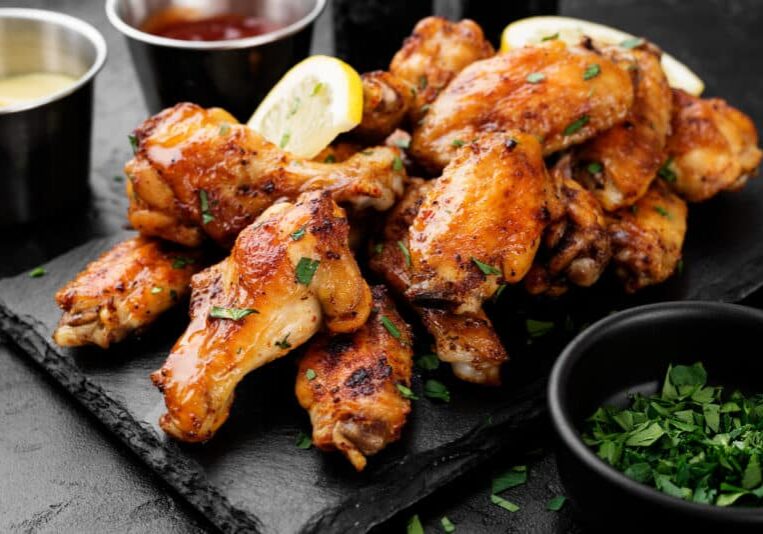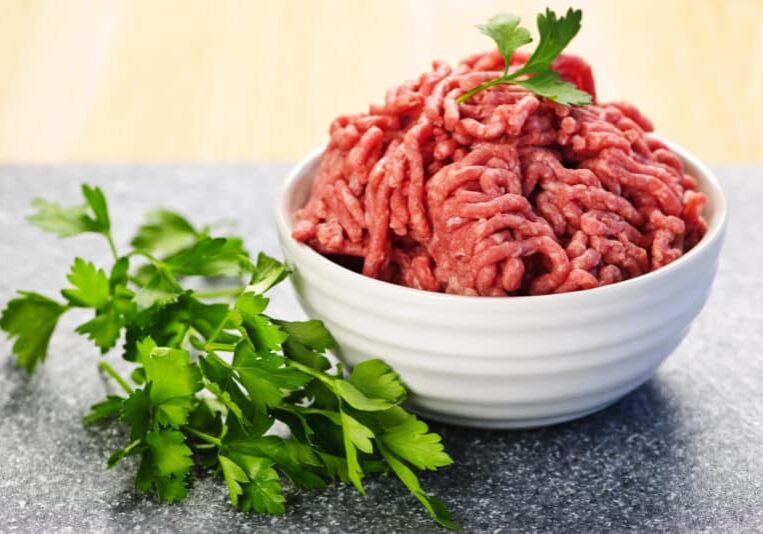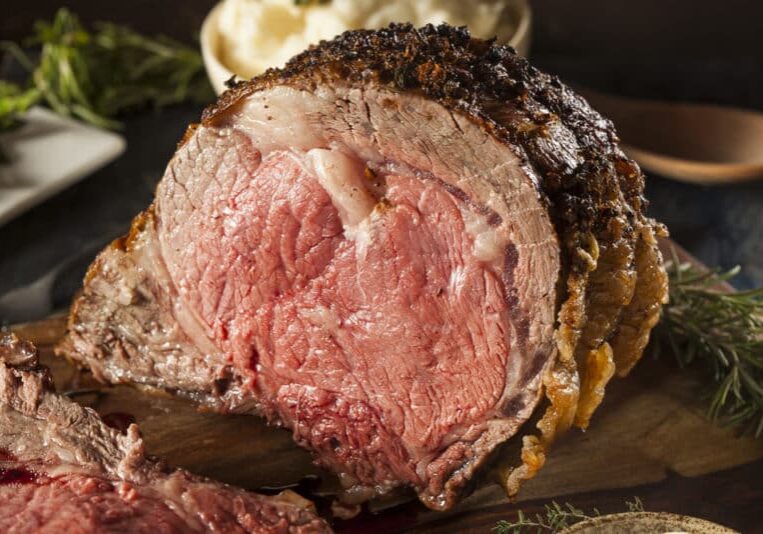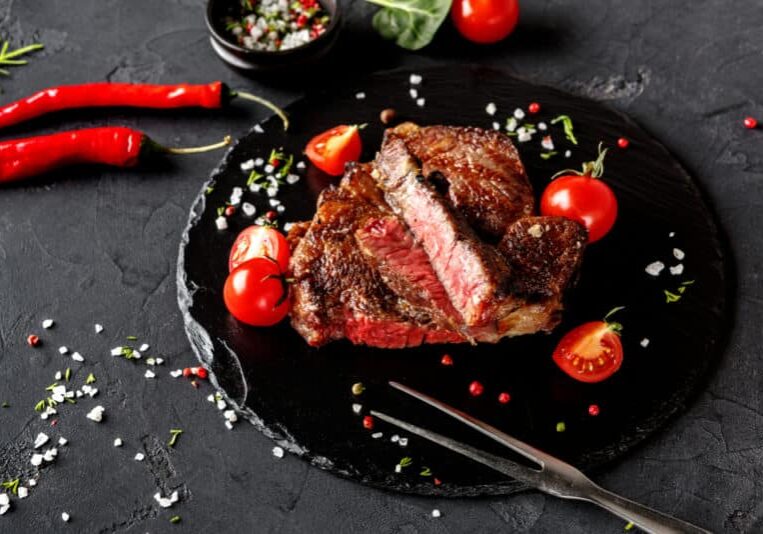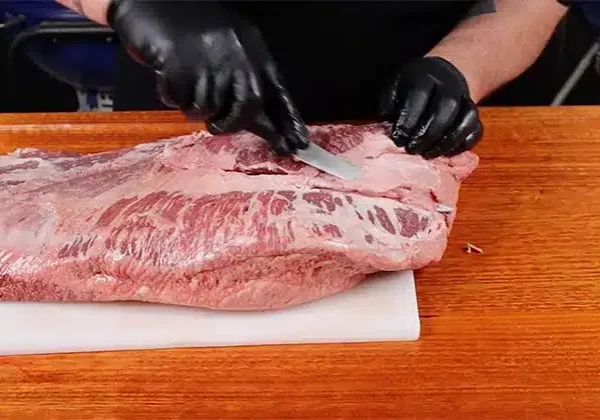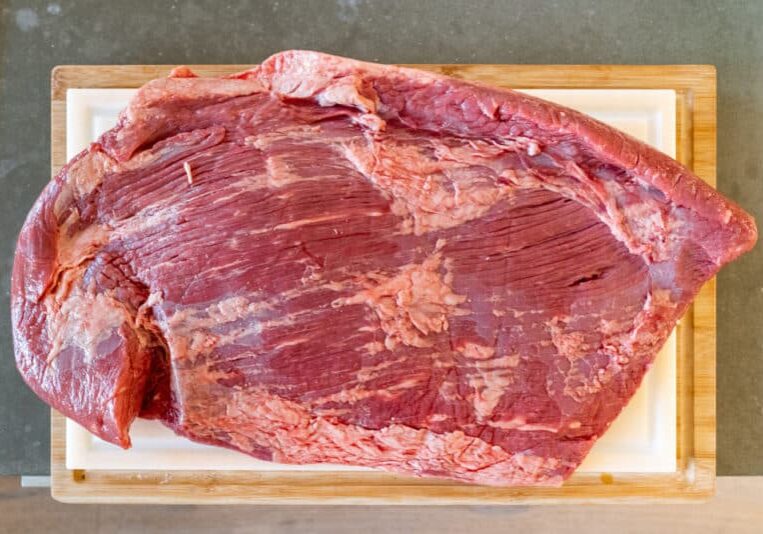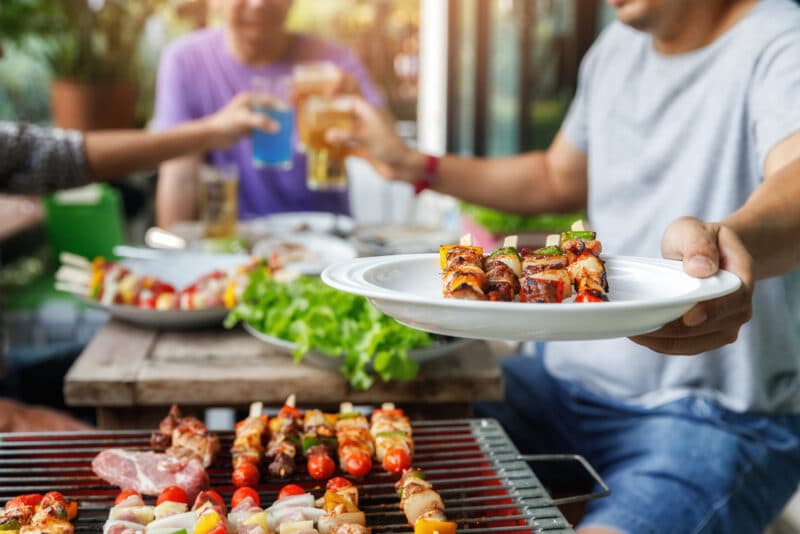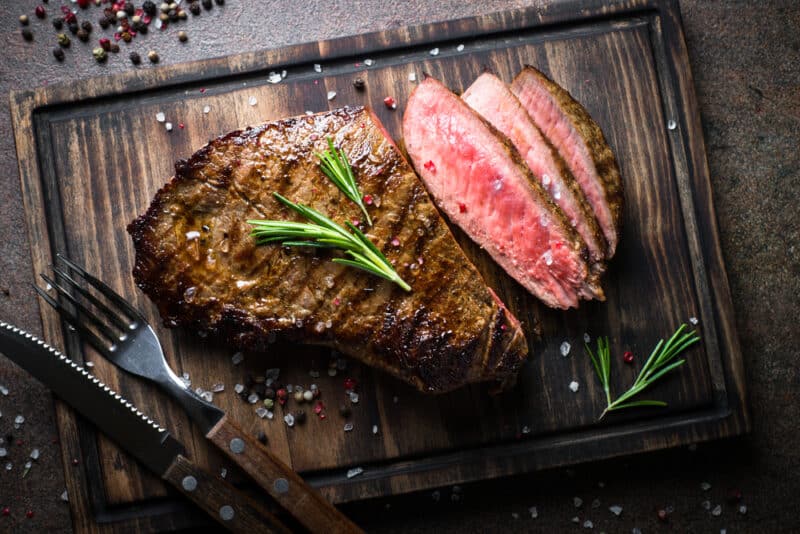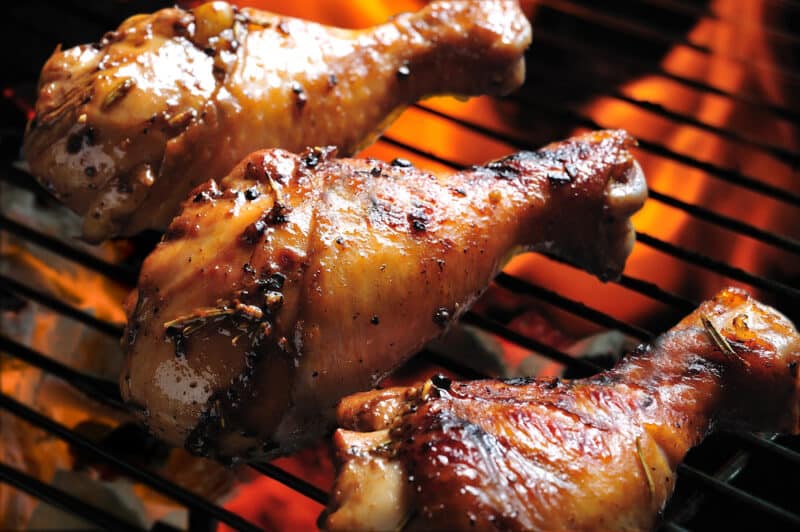What To Look For In Your First Smoker
TheGrillingMaster.com is reader-supported. If you buy something using the links on our site, we might earn an affiliate commission at no added cost to you. This helps us pay our staff to keep making awesome content for you!
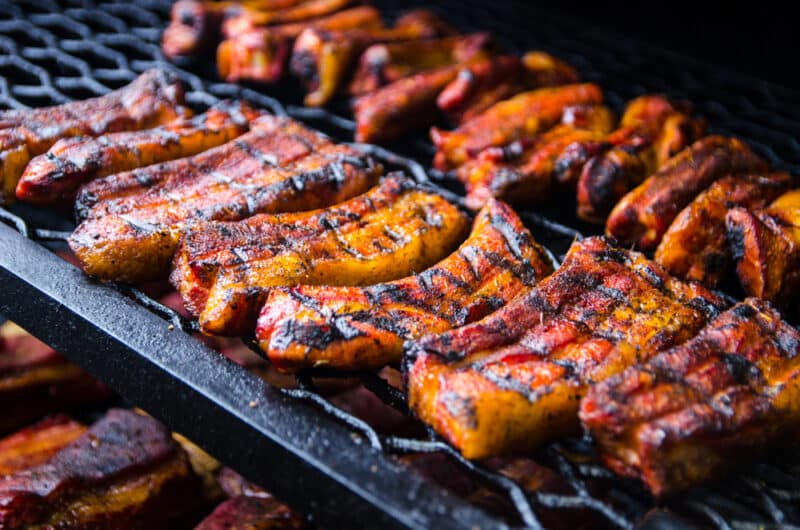
Welcome, BBQ enthusiasts and aspiring pitmasters! If you’re reading this than chances are you’re ready to take the plunge and buy your first smoker.
I remember being in your shoes, excited yet overwhelmed by the myriad of choices.
The right smoker can turn your BBQ game from good to extraordinary, but finding that perfect smoker isn’t always easy.
This guide is designed to help you navigate your smoker-buying journey, taking into account crucial factors like size, quality, price, and some beginner-friendly tips for smoking meat. So let’s stoke the fire and dive right into the world of BBQ smokers.
Understanding Different Types of Smokers
There are several types of smokers, each with its own unique characteristics and benefits. As we explore each type, remember to think about which one might suit your needs and preferences the best.
-
Offset Smokers: Offset smokers, also known as barrel smokers or stick burners, feature a large, cylindrical cooking chamber positioned horizontally, with a smaller firebox attached to one side. You build your fire in the firebox, and the heat and smoke travel across the food in the cooking chamber before exiting through a chimney. This type of smoker is beloved by many traditionalists for its capacity to produce a rich, smoky flavor. However, it requires a certain level of skill and attention to maintain a steady temperature.
-
Vertical Water Smokers: These are compact units with a heat source at the bottom, a water pan above the heat to maintain moisture and stabilize temperature, and one or two grates for the food above that. They’re relatively inexpensive and simple to use, making them a good choice for beginners. However, they tend to have less cooking space and may not provide the same deep smoky flavor as some other types.
-
Box or Cabinet Smokers: Box smokers, also known as cabinet or vault smokers, resemble a filing cabinet or refrigerator. They typically have a heat source at the bottom with multiple racks above for food. These smokers are prized for their large cooking capacity and efficient use of space. Some high-end models even come with advanced features like digital temperature control.
-
Drum Smokers: Essentially a steel drum with a heat source at the bottom and a cooking grate at the top. Drum smokers, also known as Ugly Drum Smokers (UDS), are appreciated for their simplicity, efficiency, and the quality of the BBQ they produce. They can be a cost-effective option if you’re handy and want to build your own.
-
Pellet Smokers: Pellet smokers use wood pellets as fuel, which are fed from a hopper into a fire pot by an auger. They offer excellent temperature control, often with digital precision, and are easy to use, making them popular with both beginners and experts. However, they’re generally more expensive and rely on electricity, which can limit their portability.
-
Electric Smokers: These smokers use an electric heating element to produce the heat. They’re incredibly easy to use and offer excellent temperature control but won’t provide as much of a smoky flavor compared to other types.

(Smoked this Tri Tip last night – turned out amazing!)
Factors to Consider When Buying Your First Smoker
Now that we’ve explored the different types of smokers, let’s discuss the key factors you should consider when deciding which smoker to purchase for your BBQ adventures.
-
Size: The size of your smoker is a critical consideration. Ask yourself: How much food do you typically plan to smoke at a time? If you’re mostly cooking for small gatherings or your family, a compact smoker might be sufficient. However, if you’re planning to host larger parties or smoke larger cuts of meat like a whole brisket, you’ll need a smoker with more cooking space. Also, think about where you’ll store your smoker when it’s not in use. Make sure you have enough outdoor space to accommodate the size of the smoker you choose.
-
Quality: The quality of your smoker will directly impact its performance and longevity. You’ll want a smoker made from durable materials that can withstand high temperatures and resist rust. Look for a smoker with a sturdy construction that feels solid and well-built. Thicker metal will retain heat better, promoting more consistent and efficient cooking. The quality of the smoker is also reflected in the brand’s reputation and the warranty provided. Reading reviews and talking to other BBQ enthusiasts can be extremely helpful in assessing the quality of different smokers.
-
Price: The cost of smokers varies greatly depending on their size, type, quality, and features. You can find small, simple smokers for under $100, while high-end models with advanced features can cost several thousand dollars. When determining your budget, consider both the initial cost of the smoker and the ongoing costs for fuel and maintenance. Remember, you’re investing in a tool that should provide you with many years of delicious BBQ if cared for properly. It might be worth spending a bit more upfront for a smoker that will perform better and last longer. However, there are also many affordable smokers that offer great value for their price.
-
Features: Modern smokers come with a variety of features designed to enhance ease of use and cooking performance. For example, built-in thermometers, multiple or adjustable cooking racks, easy ash disposal systems, and even Wi-Fi connectivity for remote monitoring and control. As a beginner, you might appreciate features that make the smoking process more straightforward and less time-consuming, like precise temperature control or an easy-to-clean design.
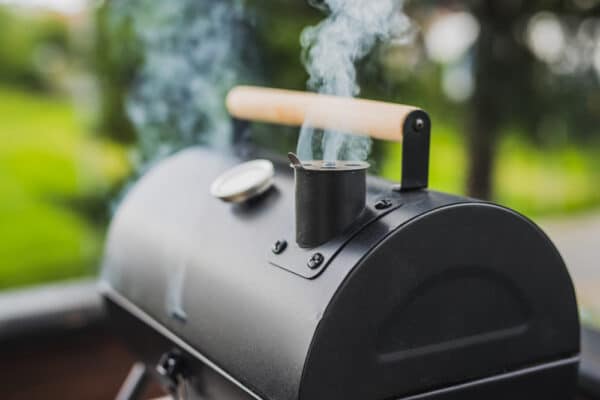
Size
Having considered the size, quality, price, and overall type of your potential smoker, let’s now dive into some specific features to look for in a smoker. These can truly make your smoking experience more enjoyable and hassle-free.
-
Temperature Control and Range: One of the most crucial aspects of smoking is maintaining a consistent temperature. Look for a smoker with a reliable temperature control system. For charcoal or wood smokers, this might mean having adjustable vents or dampers. For electric or pellet smokers, look for models with digital thermostats or even programmable temperature controls. Also, consider the temperature range the smoker can achieve. While smoking is generally a “low and slow” cooking method, some recipes might require higher temperatures.
-
Ease of Use and Cleaning: As a beginner, you’d likely appreciate a smoker that’s straightforward to use. Electric and pellet smokers are typically the most user-friendly, often featuring “set it and forget it” functionality. When it comes to cleaning, consider how easy it is to remove ash or grease. Some smokers have removable ash pans or grease trays, which make cleanup much simpler.
-
Fuel Type: The type of fuel your smoker uses can influence the flavor of your food and the ease of use. Charcoal smokers can impart a strong smoky flavor but require more effort to manage. Gas grills and electric smokers are easier to use and offer great temperature control but might not provide as robust a smoke flavor. Pellet smokers strike a balance, using wood pellets for fuel to deliver a nice smoke flavor with the convenience of digital temperature control.
-
Extra Features: There are various additional features that some smokers offer for added convenience. Built-in meat thermometers can take the guesswork out of determining when your food is done. Multiple racks or a large cooking surface can allow you to smoke different types of food at the same time. Some smokers even offer Wi-Fi connectivity, letting you monitor and control your smoker from your smartphone. While not strictly necessary, these features can make your smoking experience more enjoyable and efficient.
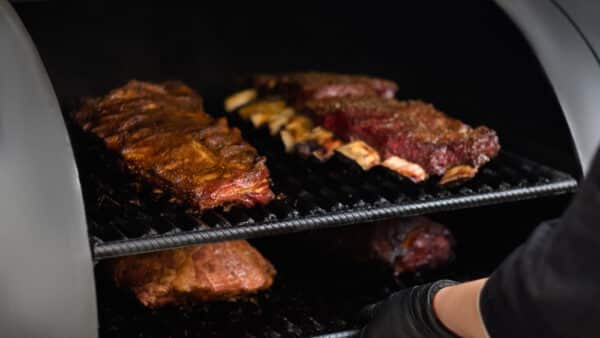
Quality
Now that we’ve covered how to select your first smoker, let’s get into the nitty-gritty of how to actually smoke meat. As a novice, understanding the basics of the smoking process and having some handy tips up your sleeve can go a long way.
Understanding the Smoking Process
Smoking is more than just cooking; it’s an art form that requires patience, attention to detail, and a bit of science. The key principle is ‘low and slow.’ That is, smoking is typically done over several hours at low temperatures. This slow cooking process allows the collagen in the meat to break down, resulting in tender, juicy meat that falls off the bone.
-
Choosing the Right Wood: The type of wood you use can significantly impact the flavor of your smoked meats. Hardwoods, like hickory, oak, and mesquite, are most commonly used because they produce a steady, long-lasting burn and impart a rich, smoky flavor. Fruitwoods, like apple, cherry, or peach, burn a bit cooler and provide a subtler, sweeter smoke. It’s fun to experiment with different types of wood to see how they influence the taste of your smoked meats.
-
Maintaining a Consistent Temperature: Consistency is key in smoking. Fluctuations in temperature can lead to uneven cooking or alter the texture of your meat. Keep a close eye on your smoker’s temperature and adjust your heat source as necessary. A good rule of thumb for smoking most meats is to maintain a temperature between 225 and 250 degrees Fahrenheit.
-
Essential Smoking Accessories: While your smoker is the star of the show, a few key accessories can make the smoking process easier and more efficient. A good-quality meat thermometer is crucial for ensuring your meat is perfectly cooked. A chimney starter can make lighting your charcoal a breeze. Heat-resistant gloves can protect your hands when handling hot grates or meat. And a cover can keep your smoker protected from the elements when not in use.
Remember, smoking is a labor of love. It requires time and patience, but the reward is well worth the wait. You’re not just making a meal; you’re crafting an experience. Each piece of meat you smoke is an opportunity to experiment and learn, refining your technique and developing your own unique BBQ style.
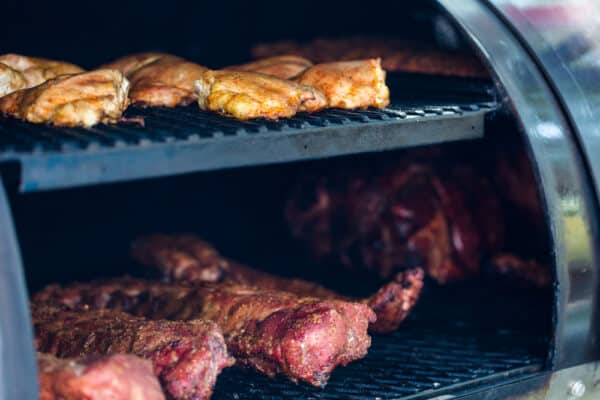
Price
When embarking on your BBQ journey, understanding the financial implications is key. While it’s natural to focus on the sticker price of your first smoker, it’s crucial to also consider the quality, as well as ongoing maintenance costs. So, let’s delve into the topic of price vs. quality and the range of prices available.
Evaluating price against quality can sometimes feel like navigating a maze. A common misconception is that a higher price always equates to better quality. While there’s some truth to this – after all, high-quality materials and advanced features often come with a higher price tag – it’s not a hard-and-fast rule. You can find well-constructed, reliable smokers at a variety of price points. It’s important to read reviews, ask for recommendations, and do your research to ensure that you’re getting good value for your money.
The range of prices for smokers can vary significantly, from under a hundred dollars for a basic charcoal model to several thousand for a top-of-the-line, feature-packed model. As a beginner, you might not need (or want to pay for) all the bells and whistles that come with a high-end smoker. However, opting for the cheapest smoker available may also be a mistake, as it might lack durability or the ability to maintain a consistent temperature – key factors for successful smoking.
It’s also essential to factor in the ongoing costs of owning a smoker, which can add up over time. This includes the cost of fuel (like charcoal, wood, or propane), replacement parts, accessories, and maintenance supplies. While these costs are generally not prohibitive, they’re worth considering when determining your budget. For example, a pellet smoker might have a moderate initial cost, but the price of pellets over time can exceed that of charcoal or wood chips.
Ultimately, the best smoker for you is the one that fits within your budget, meets your smoking needs, and excites you to ignite it up. It’s an investment not just in a piece of equipment, but in a rewarding hobby that will bring you countless hours of enjoyment and delicious meals. So, don’t rush your decision. Take the time to understand the costs involved, assess your options, and make an informed choice.
Care and Maintenance Smoker Tips
Now that you’re well-equipped with the knowledge of how to choose your first smoker and the basics of smoking meat, let’s discuss some essential care and maintenance tips to ensure your smoker lasts for many BBQ seasons to come.
-
Cleaning After Each Use: It’s crucial to clean your smoker after each use. Let your smoker cool down completely before you start cleaning. Remove and clean the grates and racks, as food particles stuck on them can affect the flavor of your next smoke. Some models come with removable ash and grease pans, which should also be cleaned out regularly. Avoid using harsh chemical cleaners; instead, opt for a mild dish soap or a specially-formulated BBQ grill cleaner.
-
Seasoning Your Smoker: Just like a cast-iron skillet, smokers also benefit from seasoning. This process involves coating the interior surfaces of the smoker with a high-heat cooking oil and then running the smoker at a high temperature for a few hours. This not only helps to protect the smoker’s interior surfaces from rust but also creates a non-stick layer that can enhance the flavor of your smoked foods over time.
-
Covering Your Smoker: Protect your smoker from the elements by using a cover, especially if you plan to store it outdoors. This can prevent rust and extend the lifespan of your smoker.
-
Regular Checkups: Regularly inspect your smoker for any signs of wear and tear. Check for any loose screws or fasteners and tighten them as needed. Keep an eye out for any potential rust spots, especially on the firebox or areas exposed to high heat. Treat any rust spots promptly to prevent them from spreading.
-
Empty the Ash: If you’re using a charcoal or wood smoker, be sure to remove the ash after each use. Ash can trap moisture, which can lead to rust.
-
Properly Store Your Smoker: When not in use, store your smoker in a dry, sheltered location to prevent exposure to moisture and drastic temperature changes.
Your smoker is an investment that, when properly cared for, will reward you with years of deliciously smoked meals. Just like any piece of equipment, regular care and maintenance are key to its longevity. Remember, a well-maintained smoker is a well-performing smoker.
Best Types of Meat to Smoke
Different meats absorb smoke and heat differently, so choosing the right type can make a significant difference in your BBQ experience. So, let’s delve into some of the best meats to smoke, each with its unique characteristics that make it a joy to prepare and savor.
-
Brisket: Ah, the king of smoked meats. Brisket is a large, tough cut of beef that’s transformed into a tender, flavorful masterpiece after a long smoke. Brisket requires patience and a steady, low temperature, but the end result – a succulent, smoky meat with a delicious ‘bark’ (crust) – is well worth the effort.
-
Pork Shoulder: Also known as pork butt or Boston butt, pork shoulder is a forgiving cut for beginners. Its high fat content keeps the meat moist during the long smoking process, resulting in pull-apart tender meat ideal for pulled pork sandwiches.
-
Ribs: Whether you choose baby back, spare, or St. Louis style, ribs are a favorite in the smoking world. They cook faster than larger cuts like brisket or pork shoulder, but still offer the satisfaction of watching the meat pull back from the bone, revealing the ‘smoke ring’ beneath.
-
Chicken: Smoking isn’t just for red meat. Chicken takes on smoke well and cooks relatively quickly. Whole chickens, thighs, or wings can all be smoked to perfection. The trick is to brine the chicken before smoking to keep it juicy and flavorful.
-
Turkey: A whole smoked turkey can be a showstopper for Thanksgiving or any special occasion. The longer cooking time allows for a smoky flavor to permeate the bird, while keeping the inside moist and tender.
-
Salmon: Don’t forget about seafood! Salmon is particularly well-suited to smoking. The fatty content keeps the fish moist, while the smoke adds a deliciously complex layer to the salmon’s rich flavor.
-
Sausages: Smoked sausages are a fantastic option for beginners. They cook quickly and are virtually fail-proof. Plus, they come in countless varieties, offering ample room for experimentation.
-
Pork Belly: If you’re a bacon lover, smoking your own pork belly is a must-try. The fat renders slowly in the smoke, creating incredibly rich, melt-in-your-mouth slices.
- Tri-tip: This is one of my personal favorites because its easy when you are cooking for a large party – and tastes great! There are also so many good choices for tri-tip side dishes to choose from.
Learn More About Grilling
If you want to learn more about grilling, check out these other helpful resources!

Kevin Turner
Hi there, I'm Kevin Turner, Founder and CEO of thegrillingmaster.com. I started this website to share my passion and knowledge with you. You can leverage my years of experience as a pit master and professional to grill great food!
About The Grilling Master
Hi there, I'm Kevin Turner, Founder and CEO of thegrillingmaster.com.
My passion has always been grilling, smoking and BBQ delicious meats that satisfy my inner carnivore!
I started this website to share my passion and knowledge with you, the hungry reader who wants to prepare the perfect meal.
You can leverage my years of experience as a pit master and professional.
Send me a message and let's connect on Twitter here.


